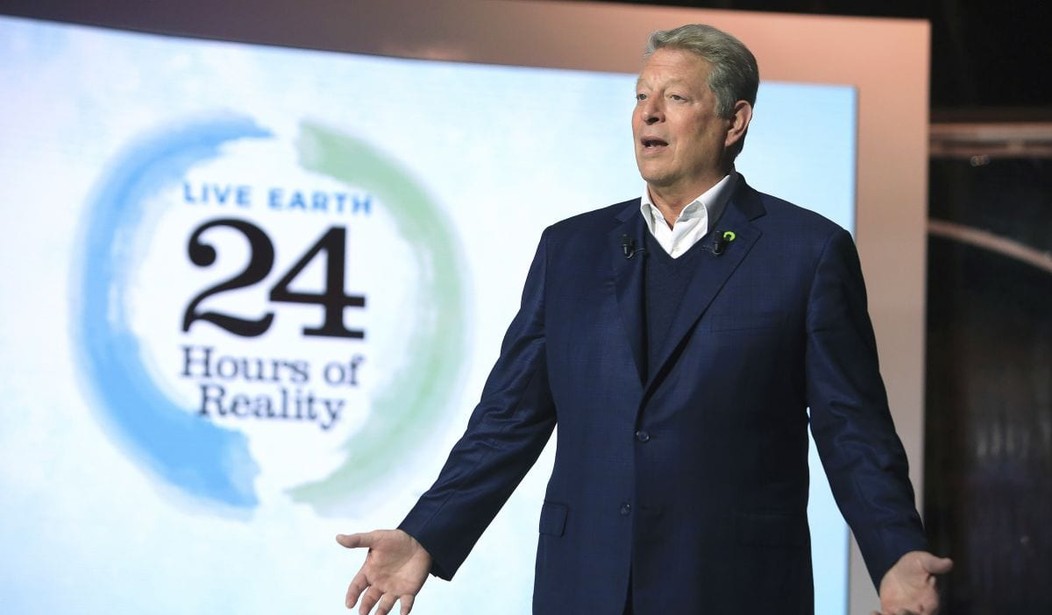As often happens when extreme weather hits, the media is featuring excited claims that the July heat wave is due to man-made climate change. But it isn’t. These events are easily explained as natural phenomena, yet a major practice used by those exploiting climate and environment for a political agenda involves claiming natural events are unnatural.
The Guardian is a familiar source of these stories. In “Heatwave sees record high temperatures around world this week” (July 13), the Guardian’s global environment editor Jonathan Watts writes:
Record high temperatures have been set across much of the world this week as an unusually prolonged and broad heatwave intensifies concerns about climate change.
On June 28, the Washington, D.C.-based group Public Citizen, through two members of the Public Citizen’s Climate and Energy Program,issued a “NOTE TO REPORTERS AND EDITORIAL BOARDS” with this headline:
As Extreme Heat Warnings Sound in New York This Weekend, Remember to Connect the Dots Between Extreme Heat and Climate Change
The sub-headline was even more definitive:
Extreme Heat and Record-Breaking Heat Are Linked to Climate Change
There is no doubt that some places have seen record high temperatures of late. For example, Glasgow just had its hottest day on record, hitting 89.4°F (31.9°C). But consider how short the historical record is: about 120 years.
That’s 0.000000026% of the Earth’s 4.5 billion-year history.
There were many times when the planet, Glasgow included, has been far hotter (and colder) than today. Consider the situation in the continental United States on July 1 and 2, as illustrated in the following figure:

PRISM Climate Group, Oregon State University, http://prism.oregonstate.edu. Map created 7/3/18.
While it was certainly warm in the U.S. Northeast at the beginning of July, no high temperature records were set. Consider also that, according to the National Oceanic and Atmospheric Administration’s statewide extreme weather records database, probably the best of its kind in the world, there has been no increase in All-Time Maximum Temperature records for states.
No statewide maximum temperature record was set in the seven years from 2012 to 2018. In 2012, one maximum temperature record was set: 113°F in South Carolina. Then none were set in the five years from 2007 to 2011. In 2006, again one record was set: 120°F in North Dakota.
No other All-Time Maximum Temperature records were set in any state in the 21st Century. You need to go back to the 1930s to find regular maximum temperature records being set:
We are not being given the whole story in another way as well. As the first figure (Daily Mean Temperature Anomaly) above illustrates, much of the Western U.S. experienced a cold wave in early July. In fact, on July 3, Eugene, Oregon recorded their coldest July morning (38°F) in 107 years of record. At the same time, 21 of the Remote Automated Weather Stations (RAWS) across eastern Oregon recorded below freezing temperatures.
Burns Lake, 124 miles west of Prince George in the interior of British Columbia, experienced an unusual mid-July freeze on the morning of July 14 with a minimum temperature of 31°F. This tied their “all-time” July record low temperature of 31°F.
Contrary to what we have been hearing, the situation in July in North America is reflective of an atmospheric flow pattern typical of global cooling. In particular, we are seeing what are called “Meridional Flow” patterns of the Jet Stream. The weather patterns associated with the pattern are large amplitude waves in the west to east mid-latitude flow; predominantly north/south winds; warm air pushing toward the Poles (occurring in both hemispheres); cold air pushing toward the Equator; extended periods of heavy precipitation; extended periods of drought; and record high temperatures.

In describing the above graph, climate realist blogger Tony Heller writes:
September 19 used to be a hot day in the US, but temperatures have plummeted over the past century. As with most summer days, temperatures dropped sharply after 1955. On this date in 1925, most of the eastern US was over 90 degrees, Nebraska, Indiana, Kentucky and much of the south was over 100 degrees.
If government climate scientists were actual scientists, they would want to understand this prior warmth — rather than bury it. But they aren’t scientists, and they have no interest in science.
Watts had asserted in the July 13 Guardian article:
The concern is that weather fronts — hot and cold — are being blocked more frequently due to climate change. This causes droughts and storms to linger, amplifying the damage they cause. This was a factor in the recent devastating floods in Japan, where at least 150 people died after rainfall up to four times the normal level.
What Watts doesn’t seem to know is that blocking systems are classic patterns of the Meridional Flow associated with global cooling. Watts cites Paolo Ruti of the World Meteorological Organization as saying:
Recent analysis suggests that anthropogenic [human-caused] forcing might indeed affect the characteristics of summer blocking events in the Euro-Asia sector, in particular leading to longer blocking episodes.
One wonders how Ruti would then explain the evidence of long-lasting, strong blocking systems in the 16th, 17th, and 18th Centuries that English climatologist Hubert Lamb identified long before any possible anthropogenic effect.
Although global warming activists will never admit it, record low temperatures are being recorded around the world in recent years, including in Antarctica.
In July 2013, Antarctica set a record low with -135.8°F (-94.7°C) that won’t appear in the record books because it was a satellite measurement, and satellites do not support the climate alarm. In late June it was reported in the academic journal Geophysical Research Letters that a new low was recorded in Antarctica of approximately -144°F, again measured using satellite-based sensors.
In their June 28 “note” to reporters and editors, Public Citizen activists tell us:
We know how to solve most of the problem [the supposed global warming crisis]. The most significant steps are making everything possible run on electricity and converting the electric grid to 100 percent renewable energy sources.
This is ridiculous.
To prepare for extreme weather — a fact of life on a dynamic planet such as the Earth — we need inexpensive, dependable power to handle high demands for air conditioning and heating. Huge amounts of energy are also needed to irrigate, build dikes, strengthen public infrastructure, and relocate populations living on flood plains or at risk from tornadoes and hurricanes.
Trying to suddenly transition away from coal and our other dependable forms of cheap power to flimsy wind and solar power, as advocated by climate activists, makes as much sense as a ship captain ordering the crew into lifeboats because they believe a severe storm is approaching. It would be suicide to abandon ship exactly when the protection of a sturdy vessel is most needed. Similarly, it is suicide to quickly move away from today’s dependable energy sources — no matter what the climate does.
The claim that human carbon dioxide emissions are causing dangerous global warming and increasing extreme weather largely began in 1988 when James Hansen, then a very junior NASA Goddard Institute for Space Studies employee, told a staged Senate hearing:
Gentlemen, I’m 99 percent sure that human beings are contributing to climate change.
It was a completely unsubstantiated claim. Hansen was rewarded by becoming head of NASA GISS, allowing him to promote the climate scare from a senior post within the federal government.
Politicians and bureaucrats of good conscience must do everything in their power to undo the damage by simply telling the truth about climate: climate change and extreme weather are natural. We should stop trying to control the climate and instead focus on preparing for whatever nature throws at us next.
A good example is preparation for hurricane strikes. Florida, Texas and other states that are threatened by these storms need to build multi-story storm shelters that allow people to take refuge above the storm surge, instead of forcing residents to flee the waves on clogged highways. India’s storm shelter network is a good example — no one needs to walk more than one kilometer anywhere on the coast of the Bay of Bengal to get to a shelter. If India can do it, why not the U.S.?
The global warming alarm was an orchestrated deception from the start, organized and perpetuated through unaccountable government bureaucracies. It will only end when the public finally comes to understand that it is the biggest and most expensive fake news story of all time.










Join the conversation as a VIP Member